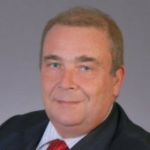| 22-02-2018 | Lionel Pavey |
 Most companies, regrettably, experience internal fraud. The financial value of the loss can be small or large – however the impact is the same. Internal investigations, procedural reviews, the time spent on detection, possible prosecution, together with the potential loss of reputation are significant factors above and beyond the monetary loss. Fraud can never be eliminated, but the threat can be minimised through proper procedures.
Most companies, regrettably, experience internal fraud. The financial value of the loss can be small or large – however the impact is the same. Internal investigations, procedural reviews, the time spent on detection, possible prosecution, together with the potential loss of reputation are significant factors above and beyond the monetary loss. Fraud can never be eliminated, but the threat can be minimised through proper procedures.
Fraud is normally caused by false representation, failure to disclose information and abuse of power and position. As fraud is performed by people and their actions, a first step to prevent fraud would be to look at the current working environment within a company. If a company is putting extra stress on employees – bigger targets, loss of overtime payments, reductions in secondary benefits, no pay rises nor promotions etc. whilst the directors receive bonuses– this can lead to employees becoming aggrieved and seeking retribution. Furthermore, employing more temporary staff and external contractors, can distance the remaining employees and challenge their allegiance and loyalty.
Internal procedures
One of the least sexy components within a company is internal procedures. They need to be drafted, amended, agreed, published, implemented and reviewed on a rolling basis. Very few people enjoy writing these manuals, but they are essential to ensure that everyone is aware of the correct procedures that have to be followed to perform any tasks. Often there is talk of a “four eyes principle”. Personally, I have always believed in a “six eyes principle” as it requires more independent control and makes fraud less easy to perform. Most of the procedures are, of course, built around common sense. Duties should be segregated – different departments have different roles to perform in ensuring the complete procedure is followed throughout the company. Even within a single department, attention should be paid to segregating duties.
An example would be the administrative function relating to a purchase. There are 4 distinct stages – procurement, arrival, warehousing and dispatch/shipment. If one member of staff was responsible for the relevant data input for all 4 stages, there is an increased risk that fraud could take place. This is not to say that work should be segregated that one employee only ever does one function – this could also lead to fraud either through disenchantment or over familiarity of the systems and procedures used at one specific point in the production chain.
External procedures
Certain departments within a company have contact with external sources – suppliers, clients, financial institutions. Anyone who has contact with an external counterparty can be swayed by opportunity if the controls are not in place. In respect of purchasers – what contact do they have with suppliers outside the office? Are they entertained – restaurants, sports events etc? How often do they have contact? In respect of sales – are they responsible for determining the sales price? How often do they see clients and spend money on them? The same also applies to treasurers, cash managers, risk managers etc.
The necessary checks and balances need to be put into place. A record of all contact with external parties needs to be kept, updated, verified and stored. Temptation can be caused by personal hardship, flattery or grievance at how the person is perceived to being treated by the company.
Standing up to the boss
As stated, a healthy company should have procedures and statutes in place. These need to be adhered to at all times – there can be no exceptions. However, a mechanism for escalation is often missing. Example – someone sends in an expense claim approved by their manager. The treasurer or controller might question the veracity of a particular entry. A proper mechanism to escalate the discrepancy needs to be firmly established. That a manager has signed off on the expense claim does not mean it is correct.
Even directors have to make sure that their claims are signed off by other members of staff. Being at the top does not mean that the procedures do not apply. Requests for a priority payment outside of the agreed procedure should always be questioned. If everyone has agreed to the standard procedures, then there can be no justification to make a payment outside of the normal procedure, just because it has been deemed a priority. If truly deemed necessary, then authorisation must be given not only by management and directors, but also by the legal department. If this occurs, then the existing procedure needs to be examined as to why the incident occurred and where the procedure broke down. This all has to be detailed in writing – fraud can happen at the highest level as well as low down with an organisation.
Static data
Every contact both inside and outside of the company should be recognised and recorded in a data system. Static data refers to all relevant data concerning an entity – full name, registered address, bank details, contact details etc. This data should be fed into all other systems, but data input should be restricted to a small number of employees. These employees should not have access to any of the systems that are used to input data relating to daily operations.
Another key area is in the cash management side – book keeping can be complex and differences not noted until the yearly audit. However, cash movements contain plentiful details – name of beneficiary, account numbers etc. This can be reconciled against the prevailing static data – are the bank account numbers the same?
Fraud can never be eradicated, but by being open, allowing questions to be asked, even performing unexpected checks on the system and its integrity, and creating an atmosphere where staff know that they can question without fear of reprisal, then at least everyone will know that the company is alert and vigilant.
That knowledge and awareness will make a potential fraud think twice.


 Long-time regulators world-wide took a wait-and-see attitude towards the non-regulated markets for Bitcoin and cryptocurrencies. But that is changing rapidly. With the growing popularity of the crypto market, the large number of unregulated cryptocurrencies (more than 1300, greater attention is now being paid by Governments and other stakeholders around the world.
Long-time regulators world-wide took a wait-and-see attitude towards the non-regulated markets for Bitcoin and cryptocurrencies. But that is changing rapidly. With the growing popularity of the crypto market, the large number of unregulated cryptocurrencies (more than 1300, greater attention is now being paid by Governments and other stakeholders around the world.
 There are many reasons for the creation of the Euro – mainly linked to memories of senior politicians who had experienced the Second World War, together with the fall of the Iron Curtain. Countries that trade together, share institutions, and a common currency, are less likely to declare war on each other seems to be the thinking. Furthermore, statesmen explained that economic and monetary union would lead to greater prosperity, increased employment opportunities for citizens and a higher standard of living. Cohesion, convergence, increased wealth and peace were certainly attractive points. So why, after 19 years, have the countries not achieved more convergence?
There are many reasons for the creation of the Euro – mainly linked to memories of senior politicians who had experienced the Second World War, together with the fall of the Iron Curtain. Countries that trade together, share institutions, and a common currency, are less likely to declare war on each other seems to be the thinking. Furthermore, statesmen explained that economic and monetary union would lead to greater prosperity, increased employment opportunities for citizens and a higher standard of living. Cohesion, convergence, increased wealth and peace were certainly attractive points. So why, after 19 years, have the countries not achieved more convergence? Cashforce
Cashforce

 Most companies, regrettably, experience internal fraud. The financial value of the loss can be small or large – however the impact is the same. Internal investigations, procedural reviews, the time spent on detection, possible prosecution, together with the potential loss of reputation are significant factors above and beyond the monetary loss. Fraud can never be eliminated, but the threat can be minimised through proper procedures.
Most companies, regrettably, experience internal fraud. The financial value of the loss can be small or large – however the impact is the same. Internal investigations, procedural reviews, the time spent on detection, possible prosecution, together with the potential loss of reputation are significant factors above and beyond the monetary loss. Fraud can never be eliminated, but the threat can be minimised through proper procedures. I want to include you in my search for what is right. Newspapers don’t publish what is right but what sells (for the Dutch, why did the Volkskrant publish the story of Jillert Anema this week?). Politicians don’t work from their convictions but what gets them votes. Large companies pay low level taxes in countries where they don’t manufacture & sell, and no taxes where they do. Actions that benefit the environment are not implemented because it weakens our position in global markets.
I want to include you in my search for what is right. Newspapers don’t publish what is right but what sells (for the Dutch, why did the Volkskrant publish the story of Jillert Anema this week?). Politicians don’t work from their convictions but what gets them votes. Large companies pay low level taxes in countries where they don’t manufacture & sell, and no taxes where they do. Actions that benefit the environment are not implemented because it weakens our position in global markets.
 Every year the EU raises money by applying a levy on member states that represents a percentage of their Gross National Income (GNI). The EU Budget operates on a 7 year plan and then an annual budget is proposed and agreed. The EU strives to use 94% of expenditure on policies and 6% on administrative costs. As with all budgets, there are 2 sides – income and expenditure. There are 4 main sources of income – traditional own resources, VAT (BTW) based resources, GNI based resources, and other resources. There are 6 main sources of expenditure – growth, natural resources, security and citizenship, foreign policy, administration, and compensations.
Every year the EU raises money by applying a levy on member states that represents a percentage of their Gross National Income (GNI). The EU Budget operates on a 7 year plan and then an annual budget is proposed and agreed. The EU strives to use 94% of expenditure on policies and 6% on administrative costs. As with all budgets, there are 2 sides – income and expenditure. There are 4 main sources of income – traditional own resources, VAT (BTW) based resources, GNI based resources, and other resources. There are 6 main sources of expenditure – growth, natural resources, security and citizenship, foreign policy, administration, and compensations. A few weeks ago the EU Commission released a report on debt sustainability within the EU. It provides an overview of the challenges faced by member countries over the short, medium and long term to meet the original convergence criteria – specifically, that existing Government debt is less than 60% of GDP. As with most Government related documents it is long – over 250 pages. A lot of attention is drawn to the Debt Sustainability Monitor (DSM) and the challenges faced to achieve the abovementioned criteria by 2032.
A few weeks ago the EU Commission released a report on debt sustainability within the EU. It provides an overview of the challenges faced by member countries over the short, medium and long term to meet the original convergence criteria – specifically, that existing Government debt is less than 60% of GDP. As with most Government related documents it is long – over 250 pages. A lot of attention is drawn to the Debt Sustainability Monitor (DSM) and the challenges faced to achieve the abovementioned criteria by 2032.
 Leasing is a common method used in business to benefit from using an asset. The part owning the asset is called the lessor who agrees to allow the user – the lessee – to use the asset, in return for a rental fee. The lessee also has to agree to certain terms and conditions as to how the asset can be used and by whom. This arrangement allows a business to enjoy the benefits of an asset – normally property or equipment – without having to purchase the asset outright at inception. The contract can also offer flexibility to the lessee with regard to replacing an asset when it is determined to be outdated. On the 1st January 2019, new accounting standards will be implemented meaning that for a lessee all lease contracts will have to be displayed on the balance sheet – with exception of short dated leases (less than 12 months) and with a monetary value of less than USD 5000.
Leasing is a common method used in business to benefit from using an asset. The part owning the asset is called the lessor who agrees to allow the user – the lessee – to use the asset, in return for a rental fee. The lessee also has to agree to certain terms and conditions as to how the asset can be used and by whom. This arrangement allows a business to enjoy the benefits of an asset – normally property or equipment – without having to purchase the asset outright at inception. The contract can also offer flexibility to the lessee with regard to replacing an asset when it is determined to be outdated. On the 1st January 2019, new accounting standards will be implemented meaning that for a lessee all lease contracts will have to be displayed on the balance sheet – with exception of short dated leases (less than 12 months) and with a monetary value of less than USD 5000.